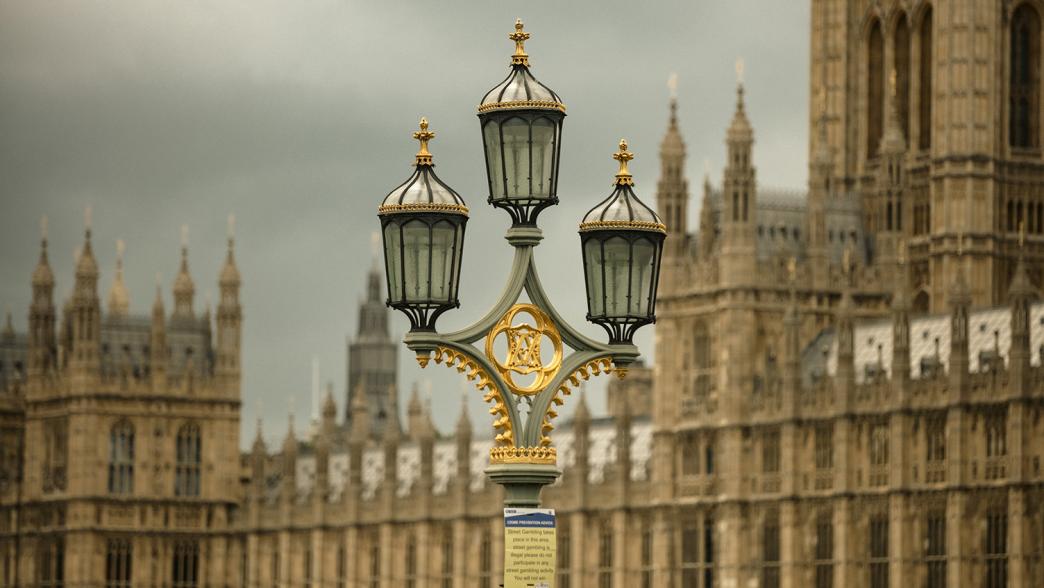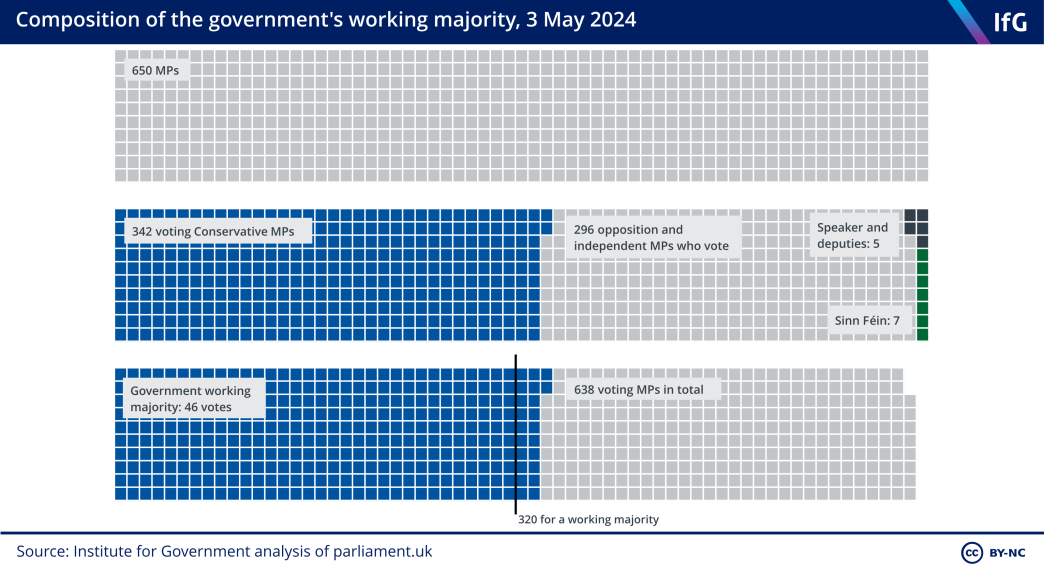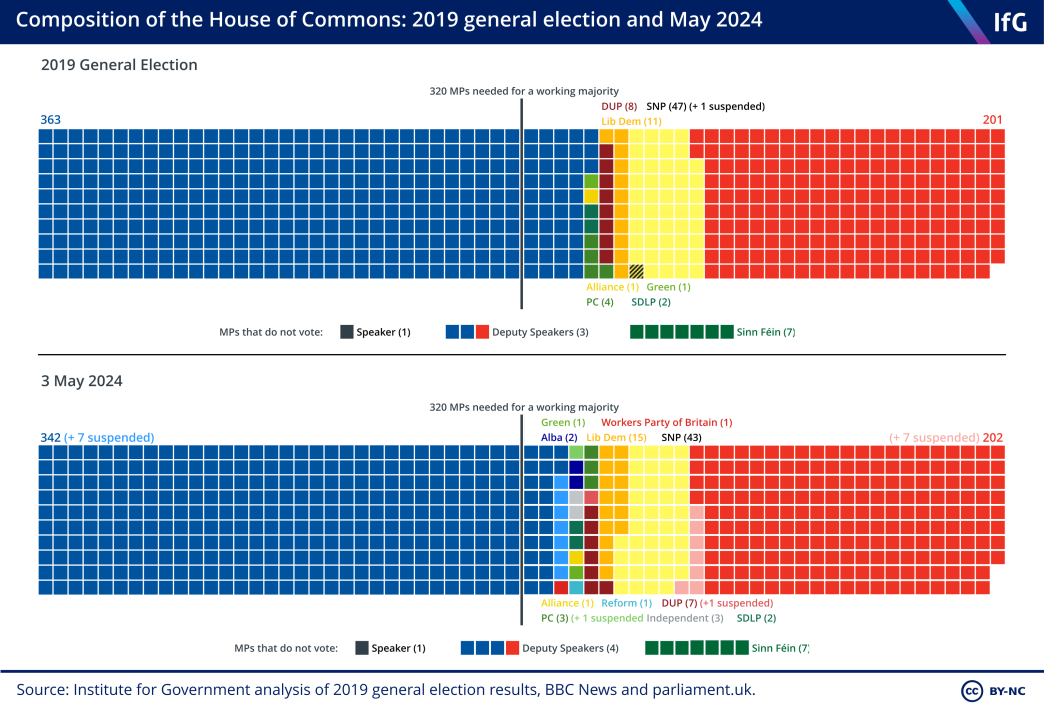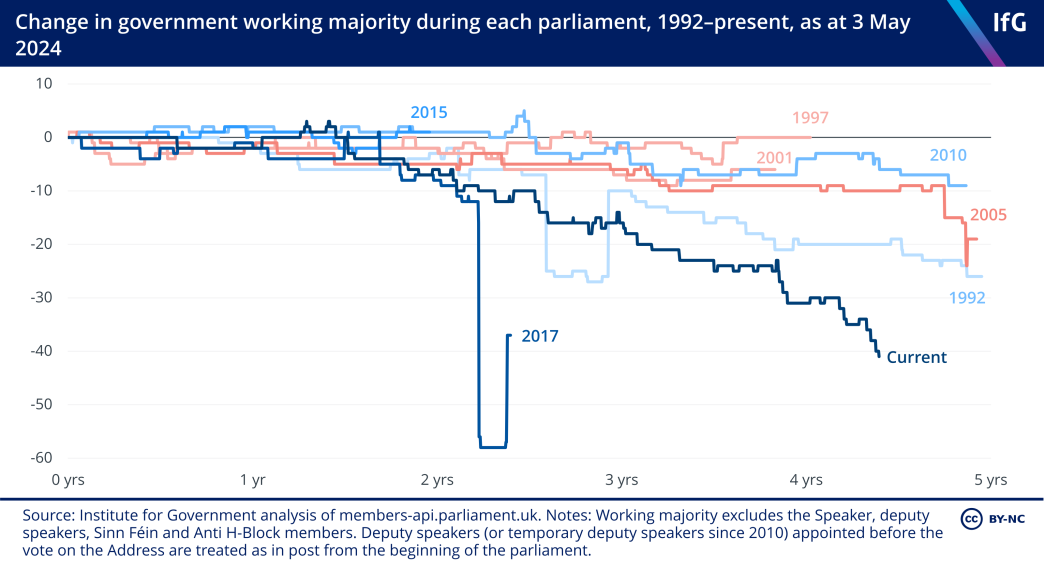Government majority
There are 650 seats in parliament. To have an overall majority, a political party must win over half of these seats: at least 326.

What is the government’s simple majority?
There are 650 seats in parliament. To have an overall majority, a political party must win over half of these seats: at least 326.
At the 2019 general election, the Conservative Party won 365 seats. As of 3 May 2024, this stands at 345 following:
- eleven Conservative by-election defeats and one Conservative by-election victory
- the suspension of the whip from Rob Roberts, Julian Knight and Crispin Blunt following allegations of sexual misconduct
- the suspension of the whip from Matt Hancock due to his participation in 'I'm a Celebrity...'
- the suspension of the whip from Andrew Bridgen for anti-vaccine social media posts. Bridgen subsequently quit the party
- the suspension of the whip from former deputy party chair Lee Anderson after he failed to apologise for saying “Islamists" have "got control" of the mayor of London, Sadiq Khan. Anderson subsequently joined Reform UK
- the suspension of the whip from Mark Menzies after he was alleged to have misused campaign funds
- the surrendering of the whip by Bob Stewart following his conviction for a racially aggravated public order offence, which was subsequently overturned on appeal
- the surrendering of the whip by William Wragg after he admitted sharing colleagues’ personal phone numbers with someone on a dating app
- Christian Wakeford’s defection to Labour in January 2022
- Dan Poulter's defection to Labour in April 2024
The combined total of seats held by opposition parties, independent MPs and the Speaker is therefore 305. This gives the Conservative Party a simple majority of 40 seats.
In practice, Anderson, Blunt, Bridgen, Hancock, Knight, Menzies, Roberts, Stewart and Wragg are still likely to vote with the government on most issues.
How do we calculate the government's working majority?
In practice, the government has a larger ‘working majority’. This differs from the simple majority because two groups of MPs do not vote in parliament.
Firstly, there is the Speaker and his or her deputies. While the Speaker is usually first elected to Parliament as a representative of a political party, they resign from their party upon election to the chair. This is because their role requires them to be non-partisan and impartial. The Speaker does not vote upon legislation in the House of Commons unless their vote is required to break a tied division.
The Deputy Speakers - of whom there are usually three - are also expected to exercise their role impartially and without regard to party politics. They do not vote in divisions either, but unlike the Speaker, they retain their party affiliations.
By convention, of the Speaker and Deputy Speakers, two are drawn from the governing party, and two from the main opposition party. This reduces the effective size of the Commons by four, to 646 MPs. The current Speaker is Sir Lindsay Hoyle; he and Dame Rosie Winterton, one of the Deputy Speakers, were both originally elected as Labour MPs. The two other original Deputy Speakers - Dame Eleanor Laing and Nigel Evans - were elected as Conservative MPs.
In December 2022, Sir Roger Gale - a Conservative MP - was appointed as an additional deputy speaker during the absence of Dame Eleanor Laing. This reduces the effective size of the Commons further, to 645 MPs.
The second group of non-voting MPs in the House of Commons are the Sinn Féin members. Sinn Féin, a Northern Irish republican political party, rejects British political institutions and its MPs do not take up their seats in the House of Commons. The seven seats won by Sinn Féin in the December 2019 general election bring the total number of voting MPs down to 638, meaning the government only needs 320 MPs to have a secure majority in parliament.

What is the government's current working majority?

With 342 Conservative MPs and 296 independent and opposition MPs eligible to vote on parliamentary legislation, the government has an effective working majority of 46 votes in the House of Commons. Twenty-four Conservative MPs would need to rebel to ensure a government defeat in the House of Commons (provided all opposition and independent MPs vote against the government).
How does the government’s working majority usually change over the course of a parliament?

The government’s working majority often declines during the course of each parliament, as MPs lose the whip or resign their seats. This is not true of every parliament, however: the 1997 and 2015 parliaments ended with virtually identical government majorities to those with which they had started.
The current parliament has seen a particularly steep fall in the government’s working majority, which is down 41 votes from December 2019. This is a sharper fall than any parliament other than the 2017 parliament, which saw 21 Conservative MPs lose the whip for opposing a no deal Brexit. The 1992 parliament also saw a significant fall in the government’s working majority, although at a lesser rate than in the current parliament.
- Political party
- Conservative Labour
- Legislature
- House of Commons
- Publisher
- Institute for Government